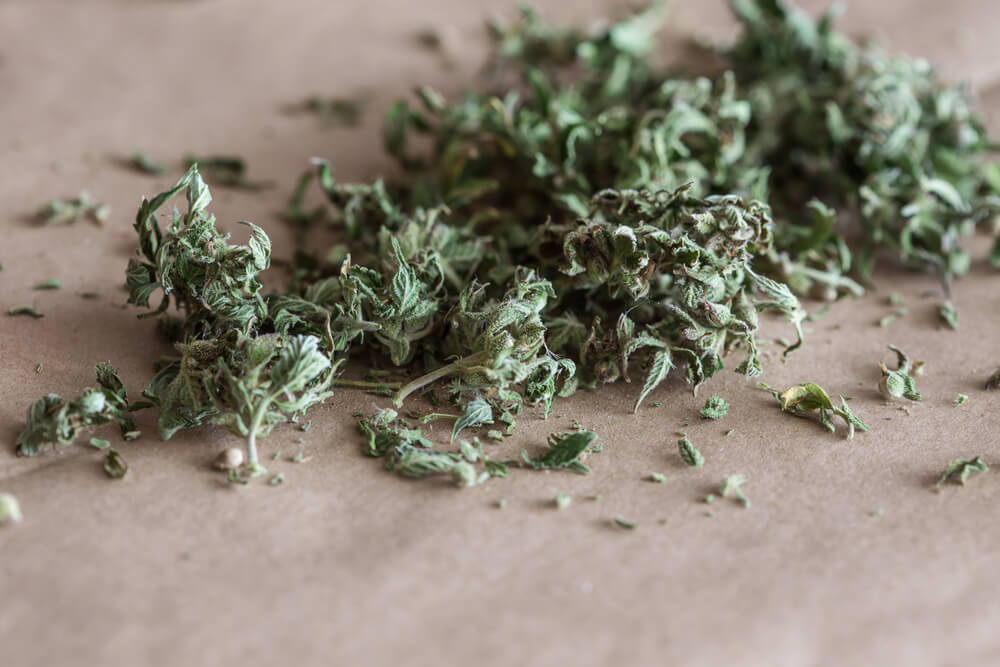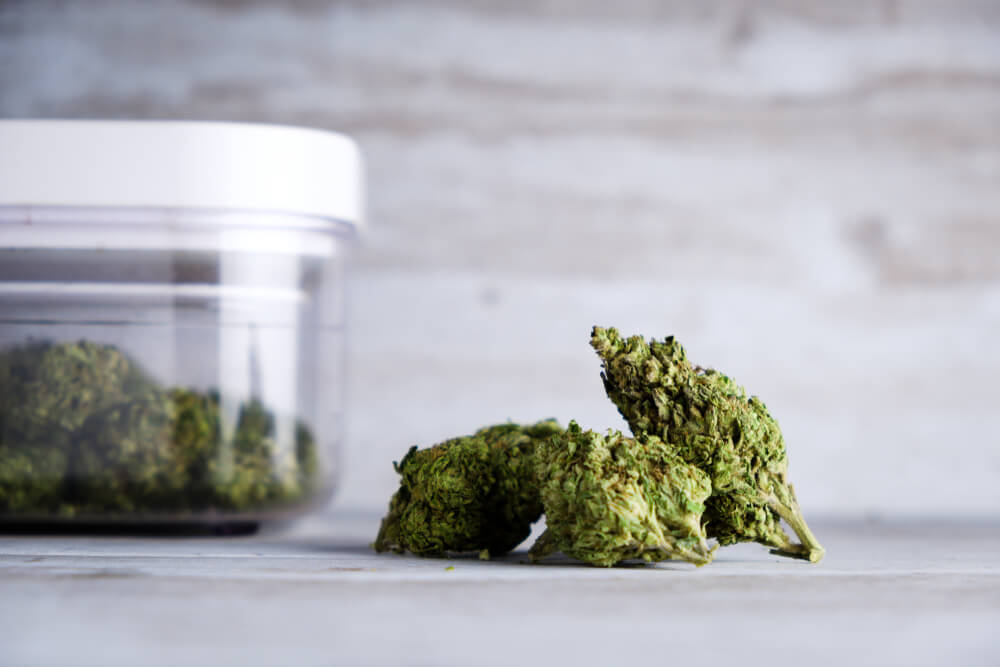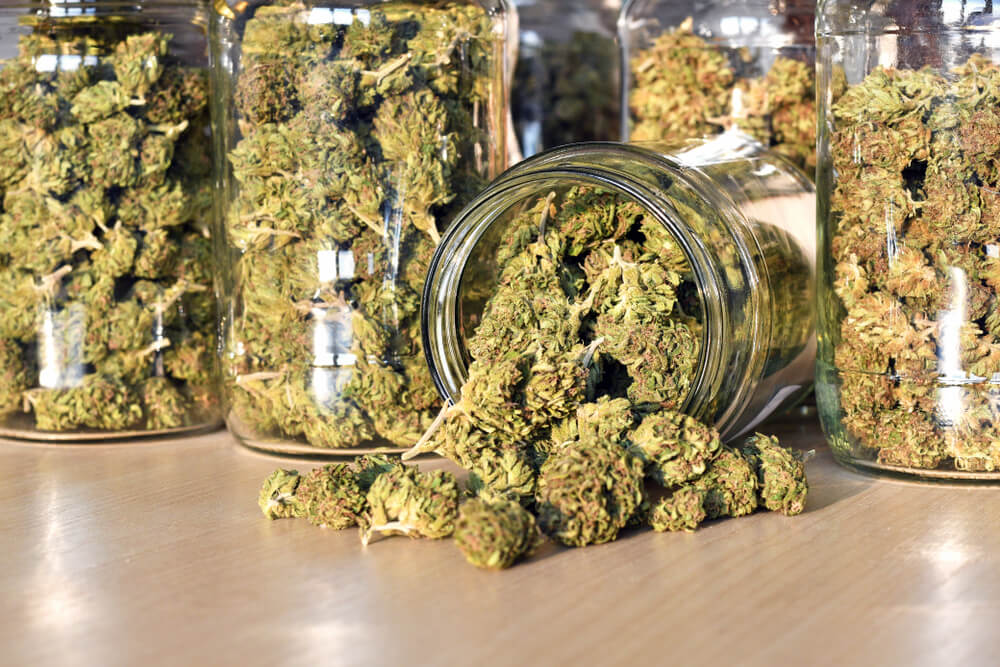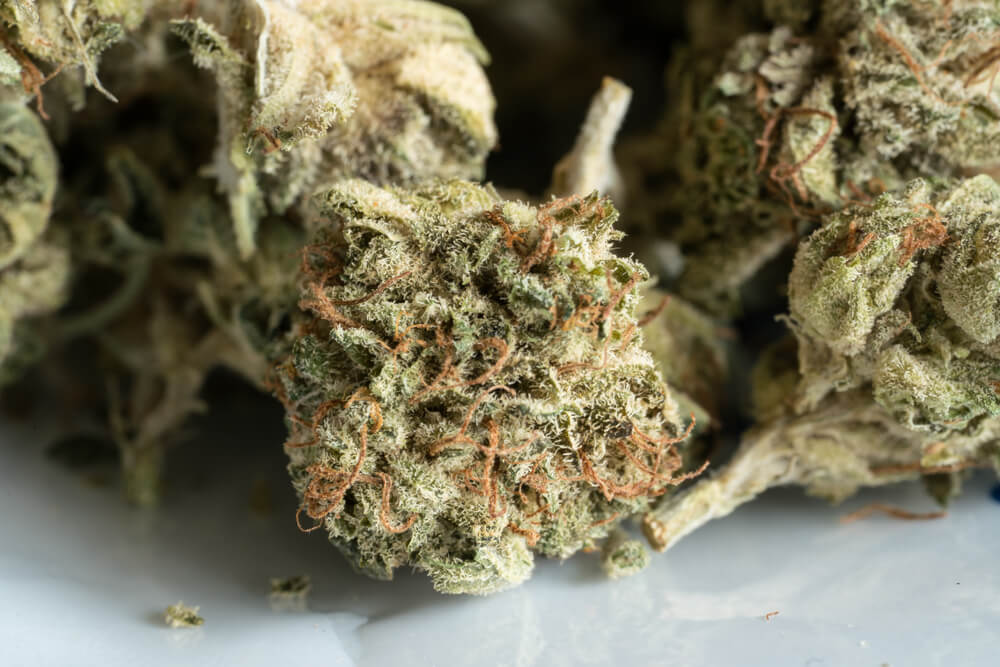Just like all organic matter, cannabis’ potency, taste, and aroma profile have a shelf life that can cause it to dry out. Thus, creating a scenario where you may need to learn how to rehydrate weed.
One of the best methods to test the freshness of marijuana is by checking to see how moist or dry it is. If your bud gets too moist, mold will start to grow. But if it’s too dry, it burns too quickly and becomes incredibly harsh tasting.
Finding the Goldilocks zone of moisture content will go a long way in helping to prevent problems down the line so you can get the most bang for your buck.
The good news is if you do find yourself stuck with a dry stash. There are several tried and true approaches for how to rehydrate weed that will breathe some life back into that old bud. We’re going to describe them to you today.
So, let’s get started!
Even though dry weed won’t hurt you, it does taste bad. It’s incredibly harsh on the lungs and throat, and you’ll have a less eventful high if you decide to smoke it. The cons don’t stop there; as marijuana dries out and degrades over time, it leaves you with a low-potency product that would be mediocre at best.
Why is Dry Weed Bad?

Dry weed won’t necessarily hurt you, but there are a few reasons why it may not be an ideal thing to ingest.
Below are three core reasons why dry weed is not the best to smoke:
It’s Harsh on Your Throat
Depending on your smoking method, you can experience a sore throat from merely smoking fresh or properly stored weed. So, smoking dry weed will intensify this reaction and cause a scratchy, potentially itchy feeling if inhaled.
It Tastes Bad
If weed is improperly stored and left to dry out, it will lose a lot of its flavour. This loss in taste is due to the terpenes of the bud evaporating. Terpenes are the components within the cannabis plant that give specific strains their unique aroma and flavour profile.
Without proper protection, terpenes will begin to evaporate immediately. Once they’re gone, you can’t get them back.
THC Degrades into CBN
Naysayers that claim cannabis doesn’t go bad or degrade are sorely mistaken. According to research, THC eventually degrades into CBN over time, or if it’s improperly stored. This fundamentally means the potency of the original THC laden product degraded or changed so much, that it becomes an entirely different compound.
What this means is that, once the THC content degrades, so does your bud’s potency. Thus, leading to a weaker experience in terms of a high or little to no effect at all.
When you also consider the fact that legally obtained weed isn’t cheap, and most people don’t want to waste their hard-earned money on an expensive strain that ends up tasting like 90’s brick weed — it’s easy to see why having “dry weed” is a bad thing.
The good news is that most of the methods for how to rehydrate weed are relatively simple to pull off. As well as, only requiring a few common household or food items you likely already have on hand.
How to Rehydrate Weed

The relationship between hydration and weed can get a bit complex. Even though all cannabis cultivators dry and cure their plants, the ultimate goal isn’t to dry it out entirely but to slowly let it evaporate without damaging any terpenes or cannabinoids in the process.
On the bright side, most stashes of withered weed can be salvaged. So, if you ever find yourself face to face with dried out bud — we listed some of the most foolproof ways for how to rehydrate weed to quench your flowers thirst below:
Combine Fresh and Dry Weed Together
If you have some fresh and moist top-shelf bud in your possession, mix some of it in with the dry bud. Sometimes this is enough to moisturize them. However, be aware that this isn’t the most reliable method. There are several variables that can change the results. Including how much of the dried herb you have, how much moist herb you have, and what the water content in it is.
Humidity Packs
Disposable humidity packs are professionally made satchels specially crafted to be used and placed into jars to rehydrate weed. They come in different sizes, and you can find them all over the web, including online dispensaries for a relatively inexpensive cost.
Lettuce
If you don’t want to wait or pay for an online shipment of humidity packs, you can opt for a cheaper and more readily available solution, lettuce. That’s right. Lettuce is made up of 96% water, which is what makes it so effective at rehydrating weed. Simply add a small cut of lettuce in a bag with your dried bud for 2-3 hours, and you should be good to go!
Citrus Peel
This is undoubtedly the most commonly used DIY method for bringing a little hydration and flavour back into your weed’s life. Since cannabis and citrus fruits contain many of the same terpenes, it can enhance the taste and smell. Orange peel is particularly popular, but any citrus fruit can be used.
Carefully cut the outer skin of a lemon, lime, grapefruit or any other fruit pee. Store it with your dry bud, and make sure the bag or container is tightly sealed.
Damp Material
Another simple and cost-effective way for how to rehydrate weed is to place damp paper towels, a sponge, a cotton ball. Or a Q-Tip in the same container as your dehydrated bud. If you’re using a cotton ball or Q-Tip, try to keep them from touching the buds because some of the fibers can get transferred on to it. Remember, we’re trying to hydrate our weed not contaminate it.
How to Properly Store Weed

According to the famous proverb coined by Benjamin Franklin in 1735. “An ounce of prevention is worth a pound of cure.” This sentiment definitely holds true when it comes to maintaining the quality of your stash for the long-haul.
Properly storing fresh weed right off the bat is the best way to prevent it from going bad and drying out too soon. Never store your bud where it is exposed to open air. Always keep it in an airtight container or jar (or a vacuum-sealed bag) opaque or dark in colour.
This technique keeps the light and oxygen away from your weed. Which are the two most influential factors in prematurely ageing weed.
Temperature also plays a significant role in how long the ganja will last. Ideally, it should be stored just a little below room temperature to keep it fresh. When storing cannabis, it’s important to know that climates between 25°C (77℉) and 30°C (86℉) are the perfect breeding temperatures for mold and mildew to form.
Storing it in a cool, dark environment around 0°C (32℉) and 20°C (68℉) is perfect for maintaining ideal humidity. As well as, temperature levels. But keep in mind that it’s impossible to keep all the air and light out when you open it.
The most you can do is be sure to keep the lid or bag tightly closed if it’s not being used to load a joint or bowl.
How to Rehydrate Weed – Prevention & Proper Storage is Key
There are no negatives or downsides to learning how to rehydrate weed. In fact, the opposite is true. As we discussed earlier, many perplexities can arise when you don’t properly store, handle, or care about what you’re smoking, so there’s literally no reason not to do it.
As you now know, moisture is imperative to getting the most out of your weed. It influences potency, aroma, flavor, and longevity. However, too much moisture can have the opposite effect. Thus, leading to the growth of mold and mildew, which is where proper storage techniques come into play.
Dry weed can be a total buzzkill, in more ways than one. However, ensuring that you are doing all that you can to maintain your bud’s integrity effectively. This will go a long way in you reaping the benefits for as long as possible.
However, like with anything else, the wonderful world of weed is filled with various trials and errors and learning experiences.
After all, seasoned tokers aren’t made in a day!

